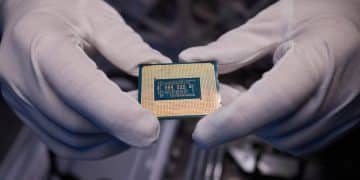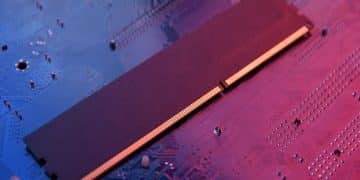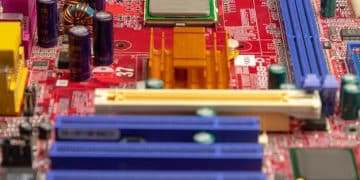Is Your Motherboard Ready for 2025? PCIe 5.0 Benchmarks
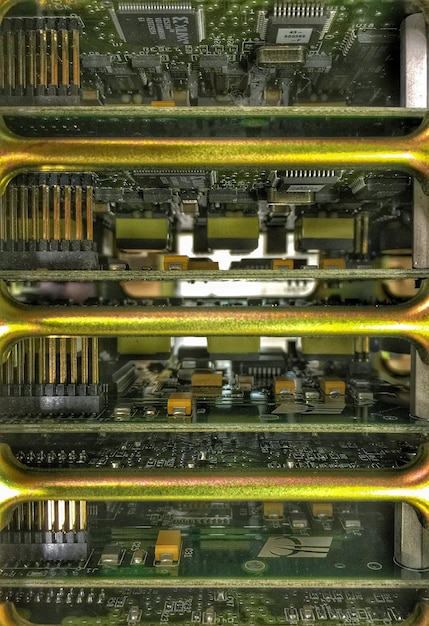
As we approach 2025, understanding PCIe 5.0’s performance gains and ensuring your motherboard is compatible becomes crucial for maximizing the speed and efficiency of the latest GPUs and NVMe SSDs.
Are you future-proofing your gaming rig? With 2025 on the horizon, it’s time to ask: is your motherboard ready for 2025? Benchmarking PCIe 5.0 performance gains is essential for gamers looking to harness the full potential of next-gen hardware.
Understanding PCIe 5.0: The Basics
PCIe (Peripheral Component Interconnect Express) has been the standard interface for connecting high-speed components to a motherboard for years. PCIe 5.0 is the latest iteration, promising significantly increased bandwidth and improved performance over its predecessors.
What is PCIe 5.0 and Why Does It Matter?
PCIe 5.0 doubles the bandwidth compared to PCIe 4.0, offering up to 32 GT/s (Gigatransfers per second) per lane. This increased bandwidth is critical for demanding applications like high-end gaming, content creation, and AI workloads.
Key Benefits of PCIe 5.0 for Gamers
For gamers, PCIe 5.0 translates to faster data transfer rates for GPUs and NVMe SSDs, reducing load times and improving overall system responsiveness. This can lead to smoother gameplay and higher frame rates, particularly in graphically intensive games.
- Improved GPU Performance: PCIe 5.0 ensures that the latest GPUs can operate at their full potential, without being bottlenecked by the interface.
- Faster NVMe SSD Speeds: PCIe 5.0-compatible NVMe SSDs can deliver blazing-fast read and write speeds, significantly reducing game loading times.
- Future-Proofing Your System: Investing in a PCIe 5.0-ready motherboard ensures that your system is prepared for future hardware upgrades.
In summary, PCIe 5.0 offers substantial improvements in bandwidth and performance, making it a crucial technology for gamers looking to maximize their gaming experience and future-proof their systems.
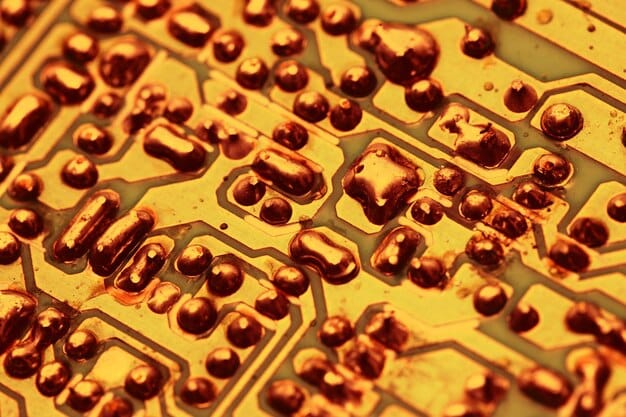
Compatibility: Motherboards and PCIe 5.0
One of the most important factors to consider when evaluating PCIe 5.0 is compatibility. Not all motherboards support PCIe 5.0, so it’s essential to check the specifications of your motherboard before upgrading to PCIe 5.0 devices.
Checking Your Motherboard’s PCIe Support
The easiest way to determine if your motherboard supports PCIe 5.0 is to consult the manufacturer’s website or the motherboard’s manual. Look for specifications that explicitly mention PCIe 5.0 support.
Chipsets and PCIe 5.0
PCIe 5.0 support is typically tied to the chipset used on the motherboard. Currently, some of the latest chipsets from Intel and AMD offer PCIe 5.0 support. Check if your CPU is also compatible with the motherboard’s chipset and PCIe 5.0.
Upgrading Your Motherboard for PCIe 5.0
If your current motherboard does not support PCIe 5.0, you may need to upgrade to a newer motherboard that does. This upgrade may also require a new CPU, depending on the compatibility between the CPU and the new motherboard’s chipset.
Understanding compatibility is crucial to avoid bottlenecks and ensure that you can take full advantage of PCIe 5.0’s enhanced capabilities. Always verify the specifications and compatibility of your components before making any upgrades.
Benchmarking PCIe 5.0: What to Expect
Benchmarking PCIe 5.0 performance is essential to understand the real-world benefits of this technology. While theoretical bandwidth numbers are impressive, it’s important to see how PCIe 5.0 performs in actual gaming and content creation scenarios.
GPU Performance Benchmarks
When it comes to GPU performance, PCIe 5.0 can provide a noticeable improvement in games that are heavily dependent on fast data transfer. Benchmarks have shown that PCIe 5.0 GPUs can achieve higher frame rates and smoother gameplay compared to the same GPUs running on PCIe 4.0.
NVMe SSD Performance Benchmarks
PCIe 5.0 NVMe SSDs showcase significant performance gains in read and write speeds. These SSDs can significantly reduce game loading times, making the gaming experience more seamless. Content creators also benefit from faster file transfers and improved application responsiveness.
Real-World Performance Gains
- Faster Game Loading Times: Games load much faster with PCIe 5.0 NVMe SSDs, minimizing wait times.
- Improved Frame Rates: High-end GPUs can achieve higher and more stable frame rates in demanding games.
- Faster File Transfers: Large files can be transferred much faster, benefiting content creators and professionals.
Benchmarking PCIe 5.0 performance provides valuable insights into the real-world benefits of this technology. By understanding these performance gains, gamers and content creators can make informed decisions about upgrading their systems.

The Impact of PCIe 5.0 on Gaming
The introduction of PCIe 5.0 has a profound impact on the gaming landscape, offering significant improvements in performance and responsiveness.
Enhanced Visual Fidelity
With the increased bandwidth provided by PCIe 5.0, GPUs can render more complex and detailed scenes, leading to enhanced visual fidelity in games. This can result in more immersive and realistic gaming experiences.
Reduced Latency
PCIe 5.0 helps reduce latency in the data pipeline, resulting in faster response times and smoother gameplay. This is particularly beneficial in fast-paced, competitive games where every millisecond counts.
Future Gaming Trends
As game developers continue to push the boundaries of visual and computational complexity, PCIe 5.0 will become increasingly important for delivering optimal gaming experiences. Games with ray tracing and other advanced graphical effects will benefit significantly from the increased bandwidth.
Overall, PCIe 5.0 is set to revolutionize the gaming industry, enabling new levels of visual fidelity, performance, and responsiveness. Gamers who upgrade to PCIe 5.0-compatible systems will be well-equipped to enjoy the latest and most demanding games.
Considerations for Upgrading to PCIe 5.0
Upgrading to PCIe 5.0 is a significant investment, and it’s essential to consider several factors before making the leap. This includes the cost of new components, compatibility with existing hardware, and the overall benefits for your specific use case.
Cost Analysis
PCIe 5.0 motherboards, GPUs, and NVMe SSDs tend to be more expensive than their PCIe 4.0 counterparts. Consider your budget and weigh the cost against the performance benefits to determine if the upgrade is worthwhile.
Power Requirements
PCIe 5.0 components often have higher power requirements than their predecessors. Ensure that your power supply unit (PSU) is capable of providing sufficient power to all components, including the new PCIe 5.0 devices.
Cooling Solutions
Due to their increased power consumption, PCIe 5.0 components may generate more heat. Invest in adequate cooling solutions, such as high-performance CPU coolers and improved case airflow, to prevent overheating and ensure stable performance.
Careful consideration of these factors will help ensure a smooth and effective upgrade to PCIe 5.0, maximizing the benefits while minimizing potential issues. Research and planning are key to a successful transition.
Looking Ahead: PCIe 5.0 in 2025 and Beyond
As we move closer to 2025 and beyond, PCIe 5.0 will play an increasingly important role in PC gaming and other high-performance computing applications. Understanding the current state of PCIe 5.0 and its future potential is essential for anyone looking to stay ahead of the curve.
Evolving Hardware Ecosystem
The hardware ecosystem surrounding PCIe 5.0 is continuously evolving, with new motherboards, GPUs, and NVMe SSDs being released regularly. Keeping up with these developments will help you make informed decisions about future upgrades.
Software Optimization
Software optimization is also crucial for maximizing the benefits of PCIe 5.0. Game developers and software vendors will need to optimize their applications to take full advantage of the increased bandwidth and reduced latency offered by PCIe 5.0.
Future-Proofing Strategies
To future-proof your system, consider investing in PCIe 5.0-compatible components, even if you don’t immediately need the extra performance. This will ensure that your system is ready for future hardware and software innovations.
In conclusion, PCIe 5.0 represents a significant step forward in PC technology, offering substantial improvements in performance and responsiveness. By staying informed about the latest developments and planning your upgrades carefully, you can take full advantage of PCIe 5.0’s capabilities in 2025 and beyond.
| Key Point | Brief Description |
|---|---|
| 🚀 PCIe 5.0 Bandwidth | Doubles bandwidth over PCIe 4.0, enhancing data transfer rates. |
| 🎮 Gaming Impact | Improved GPU and SSD performance, leading to smoother gameplay. |
| 💰 Upgrade Costs | PCIe 5.0 components are pricier, requiring budget consideration. |
| ⚡ Power & Cooling | Higher power needs; ensure adequate PSU and cooling solutions. |
Frequently Asked Questions
▼
Yes, PCIe 5.0 is backward compatible. You can use PCIe 4.0 devices in a PCIe 5.0 slot, but they will operate at PCIe 4.0 speeds. This ensures that you can still use your older hardware while upgrading your system incrementally.
▼
The primary benefits include increased bandwidth for faster data transfer, improved performance for high-end GPUs and NVMe SSDs, and future-proofing your system for upcoming hardware releases. Upgrading ensures you can utilize the latest technologies.
▼
It depends on the motherboard’s chipset. Some PCIe 5.0 motherboards may require a specific CPU generation. Check the motherboard’s specifications to ensure compatibility with your current CPU or determine if you need to upgrade.
▼
PCIe 5.0 NVMe SSDs can be significantly faster, with potential read and write speeds nearly double those of PCIe 4.0 SSDs. This results in quicker loading times for games and applications, improving overall system responsiveness.
▼
For gamers seeking the highest performance and future-proofing, PCIe 5.0 is a worthwhile upgrade. The enhanced bandwidth benefits high-end GPUs and NVMe SSDs, leading to smoother gameplay and faster loading times, especially in demanding titles.
Conclusion
In conclusion, as 2025 approaches, understanding and preparing for PCIe 5.0 is crucial for gamers and PC enthusiasts. By ensuring your motherboard is ready and compatible, you can unlock significant performance gains and future-proof your system for the next generation of gaming hardware.
